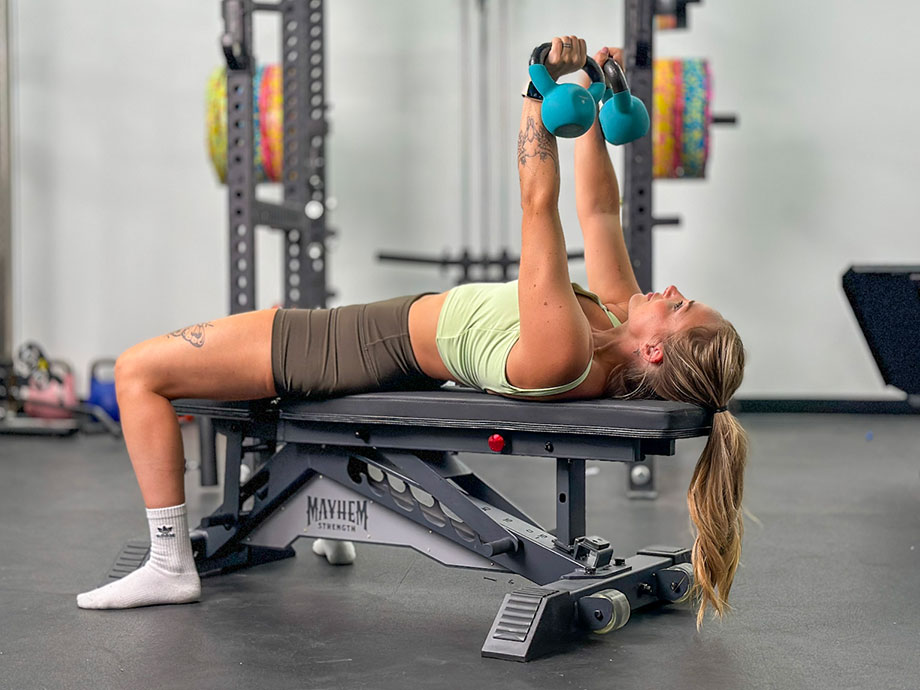We test and review fitness products based on an independent, multi-point methodology. If you use our links to purchase something, we may earn a commission. Read our disclosures.
Kettlebell training usually involves exercises such as kettlebell swings and Turkish get-ups. You don’t often—if ever—see the kettlebell bench press included in either kettlebell or dedicated chest workouts. Based on my 10 years of experience as a fitness enthusiast and certified personal trainer (CPT), I’d argue that you should add it. Not only does it help to build muscle in your chest, triceps, and shoulders, but it can also help reduce strain on your shoulder joints and rotator cuff muscles.
I’ll begin this guide by explaining how to do the kettlebell bench press with the correct form. I’ll then give modifications, variations, and alternative exercises to try. To finish, I’ll explain the benefits of this strength training exercise and common mistakes to avoid.
Without further ado, let’s ring the ‘bell and get started!
How To Do A Kettlebell Bench Press
To perform the kettlebell bench press, you’ll need a pair of kettlebells and an adjustable bench. Otherwise, the exercise form is similar to a dumbbell bench press, so it should be fairly straightforward. That said, you’ll likely need to reduce the weight for the kettlebell version because the grip and center of gravity are different.
How to do it:
- Set an adjustable bench to a flat or incline position (both are suitable for this exercise).
- Place a pair of kettlebells on the floor in front of the bench.
- Stand in front of the seat of the bench, and squat down to take hold of the kettlebells.
- Sit down, resting the kettlebells on your quads as you do so.
- Lie back on the bench, ensuring your feet are flat on the floor. You’ll want the kettlebells to be near your chest, just outside your torso, and your palms to either be facing each other (neutral grip) or facing forward.
- Press the kettlebells toward the ceiling simultaneously until both arms are extended.
- Hold momentarily before slowly lowering the kettlebells back down to the starting position.
- Continue for the desired number of reps, and then repeat the set.
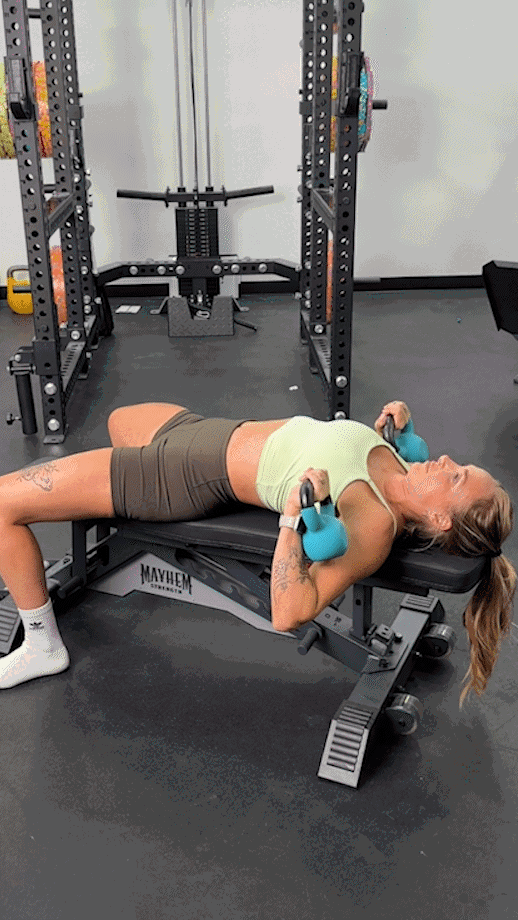
Modifications
- Dial it back: Reduce the weight or number of repetitions. Beginners in strength training may want to get familiar with other chest exercises (for example, the dumbbell chest press or the machine chest press) before trying the kettlebell version.
- Make it harder: The easiest way to make the kettlebell chest press more challenging is to increase the weight, number of reps, or number of sets. You can also incorporate tempo training or try some of the kettlebell bench press variations shared below.
How To Do the Kettlebell Bench Press At Home
To do the kettlebell bench press at home, consider purchasing a pair of the best kettlebells (if you don’t already have a set). If this isn’t an option, find two heavy household objects that weigh the same (for example, laundry detergent). For those who don’t have a weight bench at home, you can use a stability ball, dining bench, or even the floor.
Kettlebell Bench Press Variations
- Single-arm kettlebell bench press: To fix muscular imbalances and address bilateral deficits1, perform this kettlebell exercise one arm at a time. The way to do it with proper form is the same as above, but you’ll only have a kettlebell in one hand.
- Kettlebell floor press: Instead of using a flat or inclined bench, lie on the floor. The floor press is a great variation for those who don’t have an adjustable bench and may lessen the strain on your shoulders. You may also be able to lift heavier weights because the range of motion is slightly shorter compared to using a bench press.
- Two-handed single-kettlebell bench press: As the name suggests, you only need a single kettlebell for this exercise. Lie on an adjustable bench or the floor, cupping the base of the kettlebell with both hands. Then, press the kettlebell toward the ceiling.
- Alternating kettlebell bench press: This weightlifting exercise is similar to the regular kettlebell bench press, but with your hands placed just outside your torso in the starting position and your arms extended above your chest. One arm stays fixed while you bring the other down and press it back up. On the next rep, you repeat with the opposite arm. The benefit of this is constant tension on the chest and triceps.
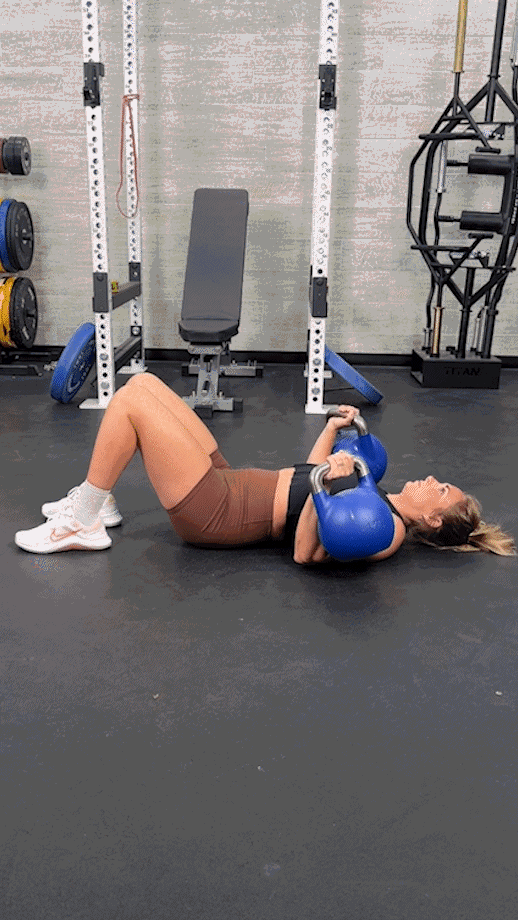
Kettlebell Bench Press Alternatives
If you aren’t sold on the kettlebell bench press—or don’t have the necessary equipment—don’t fret. Here are five kettlebell bench press alternatives that can help you build bigger pecs:
Floor Press
Why do it: You may be able to lift heavier loads with the floor press exercise than you can with the kettlebell bench press. This is because the range of motion is shorter, which helps with chest, shoulders, and triceps hypertrophy. I also find that the floor press creates less pressure on the shoulder joints, especially as the weights get heavier.
How to do it:
- Place a pair of dumbbells on the floor or one of the best exercise mats.
- Lie down, facing the ceiling. You’ll want your feet flat on the ground with your knees bent at a 90-degree angle.
- Grab the dumbbells and position them by your chest, just outside of your torso. Your palms should be facing forward.
- Brace your core, and press both dumbbells toward the ceiling at the same time.
- Pause when both of your arms are straight and the dumbbells are touching one another.
- Return the dumbbells to their original position in a controlled manner.
- Repeat for reps.
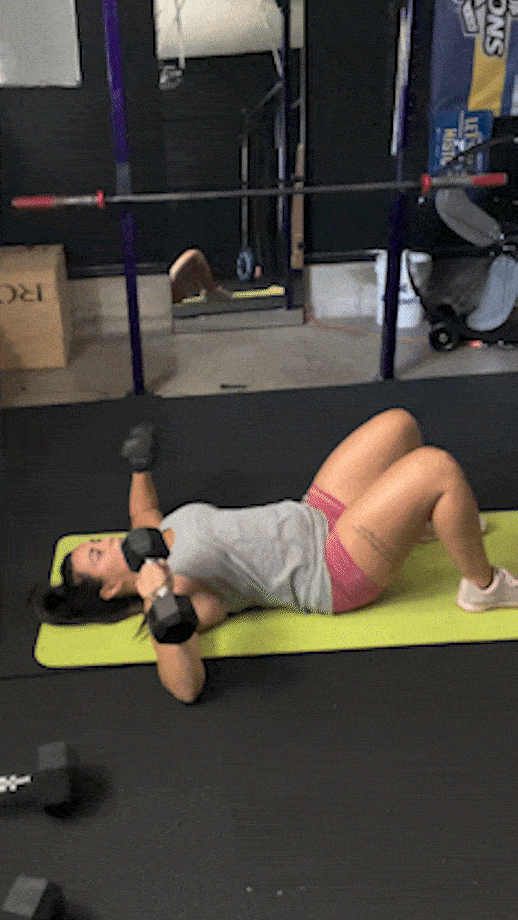
Push-Up
Why do it: Push-ups only require your body weight and can be done anywhere. They also target most of the same muscles as the chest press. There are many push-up variations, too, so anyone from beginners to more experienced gym-goers can benefit.
How to do it:
- Begin in the high plank position. You’ll want your palms to be on the floor (slightly wider than shoulder-width apart), your head to be neutral, and your arms to be extended.
- Engage your core and squeeze your glutes.
- Lower your body toward the floor by bending your elbows. It’s important to tuck your elbows into your body as you do this.
- Hold momentarily when your chest is close to the ground.
- Reverse the motion to return to the high plank position.
- Repeat for reps.
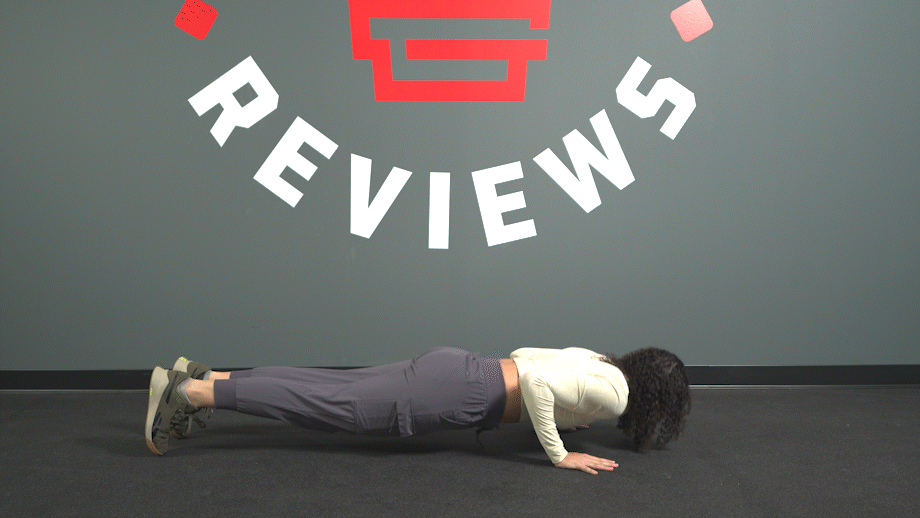
Incline Dumbbell Press
Why do it: The incline dumbbell press is a popular upper-body exercise, and for good reason. A 2020 International Journal of Environmental Research and Public Health2 study found that “an inclination of 30° produces greater activation of the upper portion of the pectoralis major.” So, you’ll target your upper chest to a greater degree compared to the kettlebell bench press.
How to do it:
- Adjust a weight bench to a 30- to 45-degree angle, and then place a pair of dumbbells on the floor in front of it.
- Grab the dumbbells, and sit on the bench. You’ll want the dumbbells to be resting on your quads.
- Lie back on the bench, bringing the dumbbells with you. Your hands should be near your chest, just outside of your torso, and your feet should be flat on the ground.
- Activate your core before pushing the dumbbells upward.
- Keep pushing until your elbows are fully extended, and then pause.
- Lower the dumbbells back down to their starting position in a controlled manner.
- Continue for reps.
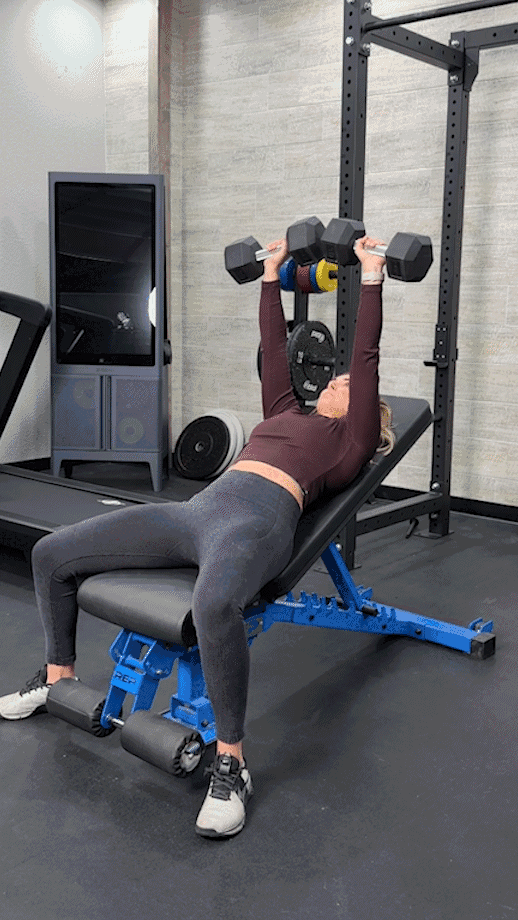
Incline Bench Press
Why do it: You’ll perform the incline barbell bench press at a 30- to 45-degree angle, so you’ll activate the upper chest similarly to the incline dumbbell press seen above. You should also be able to lift heavier loads than the kettlebell bench press or incline dumbbell press because you’re using a barbell and weight plates instead of kettlebells or dumbbells.
How to do it:
- Load the barbell with the required weight plates.
- Lie down on the incline bench, ensuring that your feet are flat on the floor and your eyes are underneath the bar.
- Grasp the bar firmly with your hands slightly wider than shoulder-width apart.
- Brace your core before unracking the barbell.
- Slowly lower the bar toward your upper chest.
- Hold momentarily, and then push with your chest and triceps to lift the bar. Continue until your arms are extended.
- Repeat for the desired number of repetitions. Rerack the bar and rest before moving on to the next set.
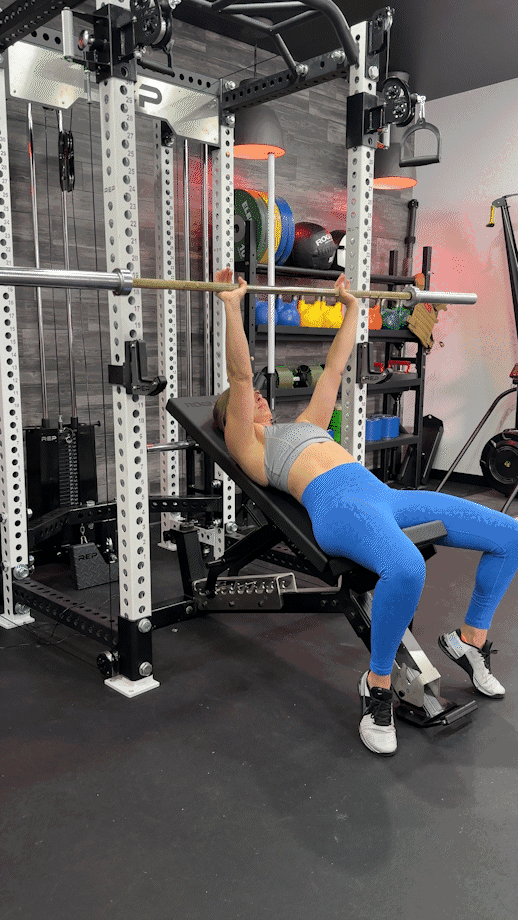
Cable Chest Press
Why do it: We included the cable chest press in our cable chest workout guide because this exercise is friendlier on the shoulder joints. Because you’re standing, you’ll also develop your core strength, and I love that you can easily adjust the positioning of the cables to target different areas of your chest.
How to do it:
- Adjust the pulleys on both sides of a cable machine to shoulder height.
- Attach handles and select your desired weight (both sides should be the same).
- Face away from the cable machine and take hold of the attachments.
- Take one or two steps forward to create tension, and then enter a staggered stance by putting one foot in front of the other.
- Tense your core, keep your head neutral, and lift your chest up. Position your hands so they’re near your chest region, just outside of your torso.
- Press both attachments forward simultaneously until your arms are extended in front of you.
- Reverse the motion slowly to return the handles back to their original positions.
- Repeat for reps.
Expert tip: Although I’ve described the standing cable chest press above, you can also do the exercise lying down on a flat or incline bench. All three variations (standing, flat, and incline) work similar muscle groups, so it comes down to your personal preference.
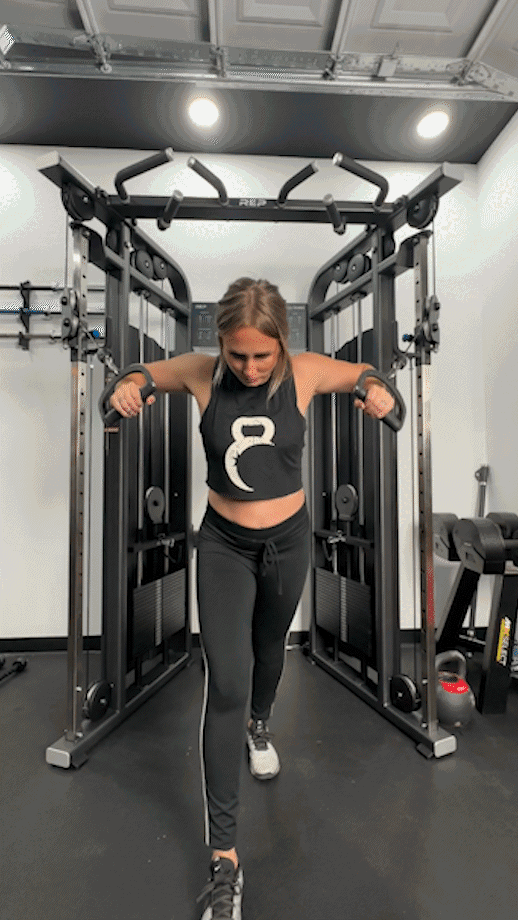
Benefits of the Kettlebell Bench Press
Why should you do the kettlebell bench press in the first place? Benefits include hypertrophy of the chest, triceps, and shoulders and less strain on your shoulder joints. It’s also a useful exercise to know when equipment is limited. I’ll elaborate:
Can Help You Build Bigger Chest, Triceps, and Shoulder Muscles
If your goal is to build more muscle in your chest, triceps, and shoulders, the kettlebell bench press can help. Yes, it’s not as popular as powerlifting exercises such as the barbell bench press, but using kettlebells is great if you’ve been bench pressing for a while and need to switch things up. Kettlebells can also help increase your range of motion, further helping to build stubborn muscle.
Creates Less Strain On Your Shoulder Joints
Regularly performing barbell bench presses may cause strain on your shoulder joints or rotator cuffs. You can limit this with mobility exercises, but swapping the barbell for kettlebells could also make a difference because the movement pattern is slightly different.
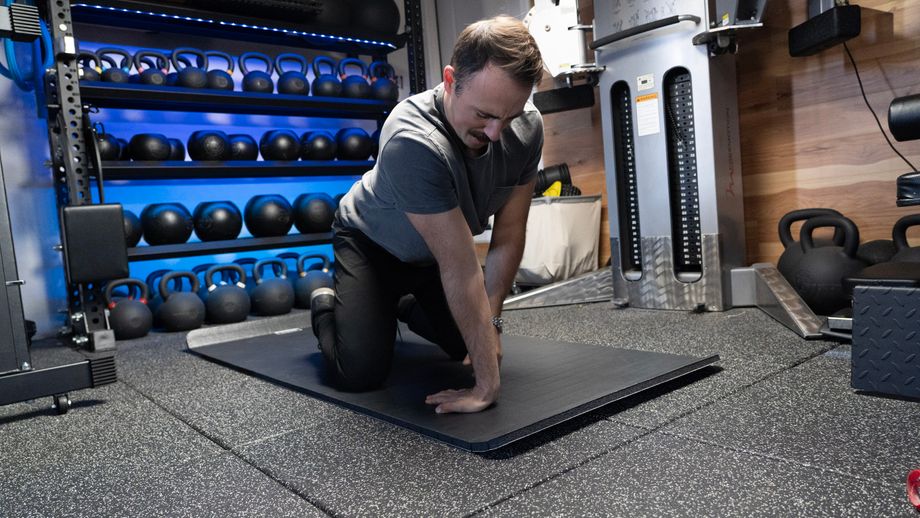
Helpful When Equipment Is Limited
Don’t get me wrong—I love the bench press—but there are times when I can’t do it because of equipment limitations. If you already have a set of kettlebells because you do kettlebell workouts at home, the kettlebell bench press is a fantastic exercise to add to your training repertoire.
Common Kettlebell Bench Press Mistakes
The kettlebell bench press may look simple at first glance; however, in my 10 years of experience as a fitness enthusiast and certified personal trainer (CPT), I’ve seen regular gym-goers and my clients make three common mistakes. Here’s how to avoid them:
The Kettlebells Are Too Heavy
As I mentioned above, you likely won’t be able to lift the same weight on the kettlebell bench press as you can on the dumbbell bench press. This is because the grip and weight distribution on kettlebells are different from dumbbells. Consider this when choosing the weight, because the kettlebells shouldn’t be so heavy you can’t maintain proper form.
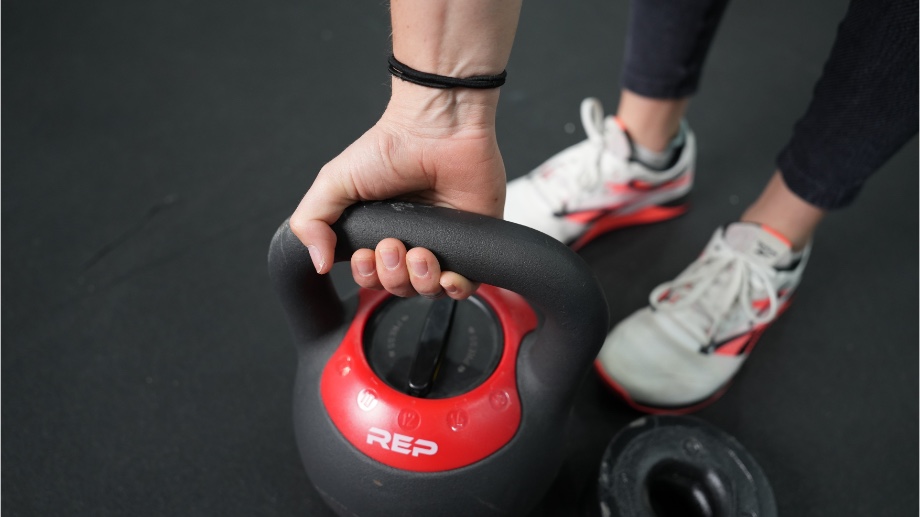
The Handles Are Facing Downward
With the kettlebell bench press, the handles should face the ceiling, with the bell portion of the kettlebell lower than the handles. I’ve seen people in gyms do it the opposite way, with the handles facing the floor. This makes the exercise harder than it needs to be to achieve progressive overload.
Your Wrists Are Bent Backward Or Forward
If you’re not as familiar with bench pressing with kettlebells, there’s a chance that your wrists will either be bent backward or forward in the starting position. When you notice this, it’s important to immediately correct your wrist position to avoid injury. You want your wrists to remain straight during the kettlebell bench press.
Muscles Worked By The Kettlebell Bench Press
Throughout this guide, I’ve mentioned that the kettlebell bench press primarily works the chest, triceps, and shoulders. Here’s a breakdown of each and how they contribute to the exercise:
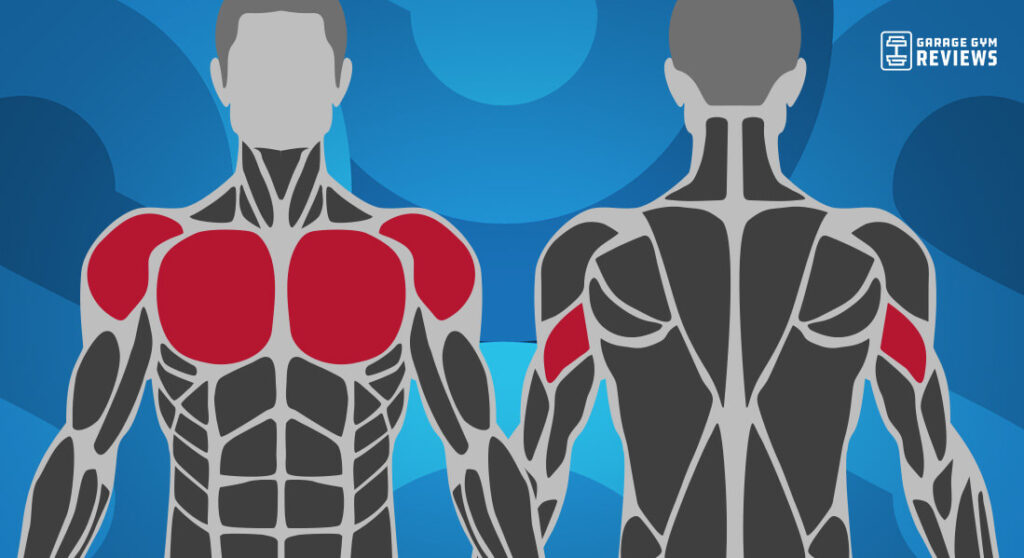
- Chest: Your pectoral muscles3 are responsible for flexion, adduction, and the internal rotation of your humerus, stabilization of your scapula, and the elevation and depression of the bones of your thorax.
- Triceps: The primary function of the triceps4 is extending your forearm at your elbow joint.
- Anterior deltoids: Throughout abduction, your anterior deltoids5 work with your posterior deltoids to stabilize your arms. The anterior deltoids also work with the pectoralis major to flex your arms when moving.
Kettlebell Bench Press: Final Thoughts
The kettlebell bench press isn’t as common as the barbell or dumbbell bench press. But, it’s a fantastic exercise to build muscle in your chest, triceps, and shoulders. You may find that regularly doing it creates less strain on your shoulder joints or rotator cuffs, and it’s a useful exercise to add to your training repertoire when equipment is limited.
If you want to try it, just make sure the kettlebells aren’t too heavy to maintain proper form. You’ll also want to angle the handles facing upward (as opposed to facing the floor), and keep your wrists straight.
Lastly—as with any of the best kettlebell exercises—it’s important to warm up and cool down properly to avoid injury and expedite your post-workout recovery.
Kettlebell Bench Press: FAQs
Is the kettlebell bench press good?
The kettlebell bench press is better than good—it’s great. I appreciate that it’s not as popular as other chest exercises (for example, bench presses and push-ups), but it can help to build muscle in your chest, triceps, and shoulders. If other chest exercises are causing strain on your shoulder joints or rotator cuff muscles, you may want to try the kettlebell bench press.
What is the difference between dumbbell and kettlebell bench press?
Apart from equipment, there are significant differences between the dumbbell and kettlebell bench press. Dumbbells are easier to grip than kettlebells and have a more balanced weight distribution. On the other hand, kettlebells activate the stabilizer muscles to a greater degree because the center of gravity isn’t the same as dumbbells.
RELATED: Best Dumbbells
Because of the above differences, most people can lift heavier on the dumbbell bench press than on the kettlebell bench press. It’s also worth noting that besides the differences, both exercises are interchangeable because they both hit your chest, triceps, and shoulders.
Can I get a big chest with kettlebells?
Kettlebells aren’t only for those into CrossFit workouts—you can use them to build a big chest, too. If this is your goal, the kettlebell bench press is an exercise I would recommend.
However, there are a few other variations to consider, including:
-Single-arm kettlebell bench press
-Kettlebell floor press
-Two-handed single-kettlebell bench press
-Alternating kettlebell bench press
Is the kettlebell enough to build muscle?
As a certified personal trainer (CPT), I’d answer yes, the kettlebell is enough to build muscle if you’re a resistance training beginner. There will, however, be instances where you need to get creative (for example, doing the kettlebell deadlift instead of the barbell deadlift). You’ll also want to include bodyweight exercises—such as pull-ups—in your workout routine.
Once you get past that beginner stage, it becomes more challenging to build muscle with just a kettlebell. It’s not impossible, but it’s certainly more difficult. If this sounds like you, you may want to consider getting a gym membership or purchasing additional equipment for your home gym.
References
- Škarabot J, Cronin N, Strojnik V, Avela J. Bilateral deficit in maximal force production. Eur J Appl Physiol. 2016 Dec;116(11-12):2057-2084. doi: 10.1007/s00421-016-3458-z. Epub 2016 Aug 31. PMID: 27582260.
- Rodríguez-Ridao D, Antequera-Vique JA, Martín-Fuentes I, Muyor JM. Effect of Five Bench Inclinations on the Electromyographic Activity of the Pectoralis Major, Anterior Deltoid, and Triceps Brachii during the Bench Press Exercise. Int J Environ Res Public Health. 2020 Oct 8;17(19):7339. doi: 10.3390/ijerph17197339. PMID: 33049982; PMCID: PMC7579505.
- Baig MA, Bordoni B. Anatomy, Shoulder and Upper Limb, Pectoral Muscles. [Updated 2023 Aug 28]. In: StatPearls [Internet]. Treasure Island (FL): StatPearls Publishing; 2024 Jan-. Available from: https://www.ncbi.nlm.nih.gov/books/NBK545241/
- Tiwana MS, Sinkler MA, Bordoni B. Anatomy, Shoulder and Upper Limb, Triceps Muscle. [Updated 2023 Aug 28]. In: StatPearls [Internet]. Treasure Island (FL): StatPearls Publishing; 2024 Jan-. Available from: https://www.ncbi.nlm.nih.gov/books/NBK536996/
- Elzanie A, Varacallo M. Anatomy, Shoulder and Upper Limb, Deltoid Muscle. [Updated 2024 Jan 30]. In: StatPearls [Internet]. Treasure Island (FL): StatPearls Publishing; 2024 Jan-. Available from: https://www.ncbi.nlm.nih.gov/books/NBK537056/
Further reading

In this El Jefe pre-workout review, we tested one of the most high-stim pre-workouts out there and reported back to see if it lives up to the internet hype. Read more

We break down various exercises to deliver the best sandbag workouts to target every muscle group. Read more

Cold plunges can be a pricey recovery tool, but with these DIY cold plunge ideas, you can save hundreds of dollars, or even more. Read more

Mat Fraser is the World's Fittest Man. He also has one sweet home gym setup in the basement of his parent's house. For the size, it's EPIC! Read more

